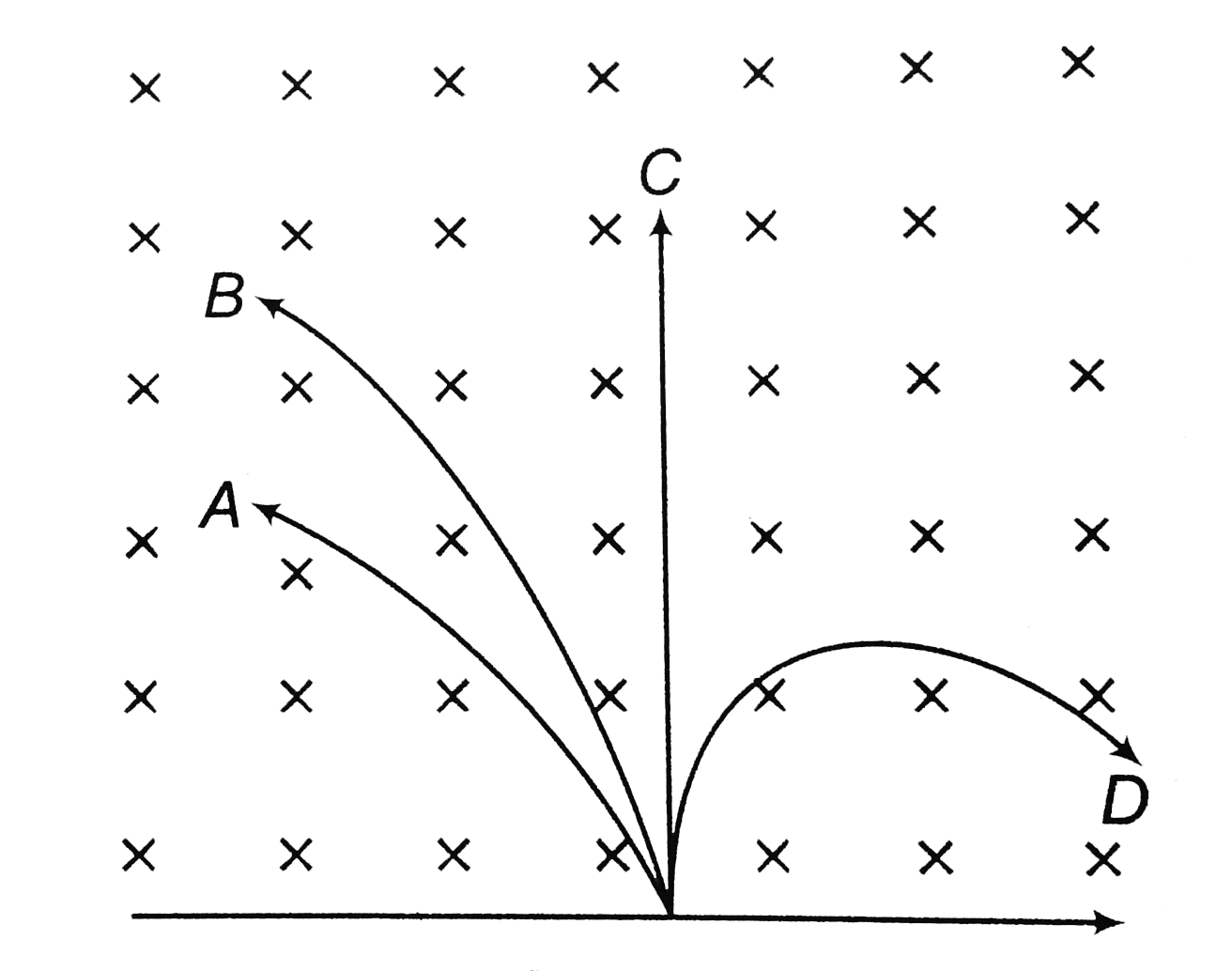The sum of all electromagnetic forces between different particles of a system of charged particle is zero
only if all the particles are positively charged
only if all the particles are negatively charged
only if half the particles are positively charged and half are negatively charged
irrespective of the signs of the charges.
The correct Answer is:D
To solve the question, we need to analyze the electromagnetic forces between charged particles and understand how they interact according to Newton's third law of motion.
1. Understanding Electromagnetic Forces:
- Electromagnetic forces arise between charged particles. These forces can be attractive or repulsive depending on the nature of the charges (like charges repel, unlike charges attract).
2. Newton's Third Law of Motion:
- According to Newton's third law, for every action, there is an equal and opposite reaction. This means that if particle A exerts a force on particle B, then particle B exerts an equal force in the opposite direction on particle A.
3. Considering All Possible Charge Configurations:
- The question asks about the sum of all electromagnetic forces in a system of charged particles. We need to consider different configurations:
- All particles positively charged.
- All particles negatively charged.
- Half positively charged and half negatively charged.
4. Analyzing the Forces:
- In any configuration, the forces between pairs of particles will always occur in action-reaction pairs. Therefore, for every force exerted by one particle on another, there is a corresponding force that is equal in magnitude and opposite in direction.
5. Conclusion on the Sum of Forces:
- Since the forces are equal and opposite, when we sum all the forces acting on the particles in the system, the total or net force will be zero. This holds true irrespective of whether the charges are positive, negative, or a mix of both.
6. Final Answer:
- Therefore, the correct option is that the sum of all electromagnetic forces between different particles of a system of charged particles is zero irrespective of the sign of the charges.
- Electromagnetic forces arise between charged particles. These forces can be attractive or repulsive depending on the nature of the charges (like charges repel, unlike charges attract).
- According to Newton's third law, for every action, there is an equal and opposite reaction. This means that if particle A exerts a force on particle B, then particle B exerts an equal force in the opposite direction on particle A.
- The question asks about the sum of all electromagnetic forces in a system of charged particles. We need to consider different configurations:
- All particles positively charged.
- All particles negatively charged.
- Half positively charged and half negatively charged.
- In any configuration, the forces between pairs of particles will always occur in action-reaction pairs. Therefore, for every force exerted by one particle on another, there is a corresponding force that is equal in magnitude and opposite in direction.
- Since the forces are equal and opposite, when we sum all the forces acting on the particles in the system, the total or net force will be zero. This holds true irrespective of whether the charges are positive, negative, or a mix of both.
- Therefore, the correct option is that the sum of all electromagnetic forces between different particles of a system of charged particles is zero irrespective of the sign of the charges.
Topper's Solved these Questions
- THE FORCESBOOK - HC VERMA ENGLISHCHAPTER - THE FORCESEXERCISE - Objective -2
7 Videos
- THE FORCESBOOK - HC VERMA ENGLISHCHAPTER - THE FORCESEXERCISE - Exercises
12 Videos
- THE FORCESBOOK - HC VERMA ENGLISHCHAPTER - THE FORCESEXERCISE - worked out Examples
3 Videos
- SPECIFIC HEAT CAPACITIES OF GASESBOOK - HC VERMA ENGLISHCHAPTER - SPECIFIC HEAT CAPACITIES OF GASESEXERCISE - All Questions
75 Videos
- WAVE MOTION AND WAVES ON A STRINGBOOK - HC VERMA ENGLISHCHAPTER - WAVE MOTION AND WAVES ON A STRINGEXERCISE - Question for short Answer
7 Videos
Similar Questions
Knowledge Check
Two particles have unequal charges, one is +q and the other is -2q. The strength of the electrostatic force between these two stationary particles is equal to F. what happens of F if the distance between the particles is halved?
AIt decreases by a factor of 4Bit decreases by a factor of 2.Cit remains the same.Dit increases by a factor of 4.
Two particles are held in equilibrium by the gravitational and electrostatic forces between them. Particle-A has mass mα and charge qα and particle-B has mass mb and charge qb. The distance between the charges may cause the chages to accelerate towards one another ?
View SolutionTrue or False there is force of repulsion between particles of matter
View SolutionInternal forces acting within a system of particles can alter
View SolutionIn net force on a system is zero then
View SolutionTwo particles having charge Q1 and Q2 , when kept at a certain distance exert a force F on each other . If the distance between the two particles is reduced to half and the charge on each particle is doubled , the force between the particles would be
View SolutionStatement-1 In a region of space, both electric and magnetic field act in same direction. When a charged particle is projected parallel to fields, it moves undeviated
Statement-2 Here, net force on the particle is not zero
View SolutionSuppose a charged particle moves with a velocity v near a wire carrying an electric current. A magnetic force, therefore, acts on it. If the same particle is seen form a frame moving with velocity v in the same direction the charge will be found at rest. Will the magnetic force become zero in this frame?
View Solution

